100 Stories
MIYAJIMA NIGHT CRUISE – Beautiful Torii Gate Light Up Seen From The Water
The Red Torii Gate is the symbol of Hiroshima, and one of the three most beautiful spots in Japan, officially. Even now, under repair and renovation as it is, it is still one of the major tourist draws of the region. So finding new, unique and special ways to view it is also one of the best ways to get the most out of any visit to Hiroshima.
Getting a local guide won’t always help there. Those of us who have lived here a long time sometimes tend to just go to our familiar spots for views of the Torii. Really, if you look at your own photos and postcards of the area, you’ll see many or most of the angles are similar. The prime viewing points are well known to all.
So it was with great happiness that I stumbled across a lesser known way of viewing the Torii that was fantastic and exciting. Worth it even now while under renovation, and a new MUST experience event for me again after the renovation is finished. That special way is a night cruise on a low boat that goes right up to the gate itself (and after all repairs and touch ups are complete, will pass actually through the gate!).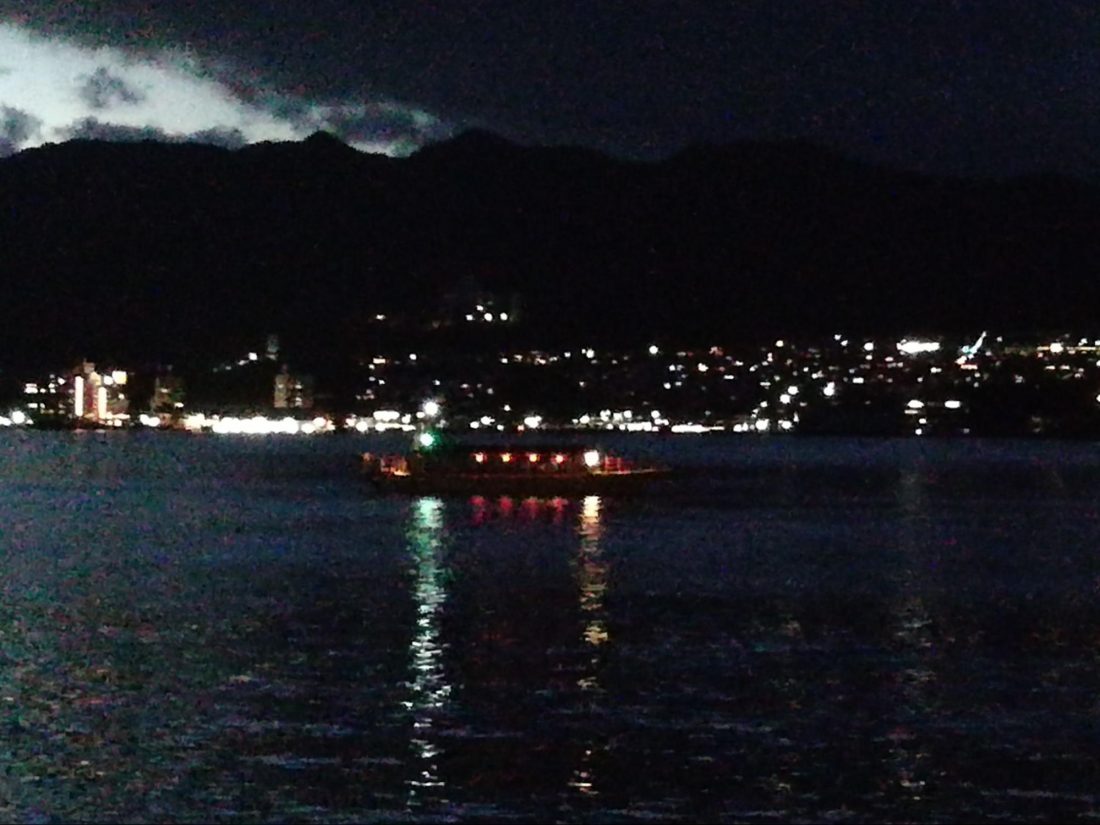
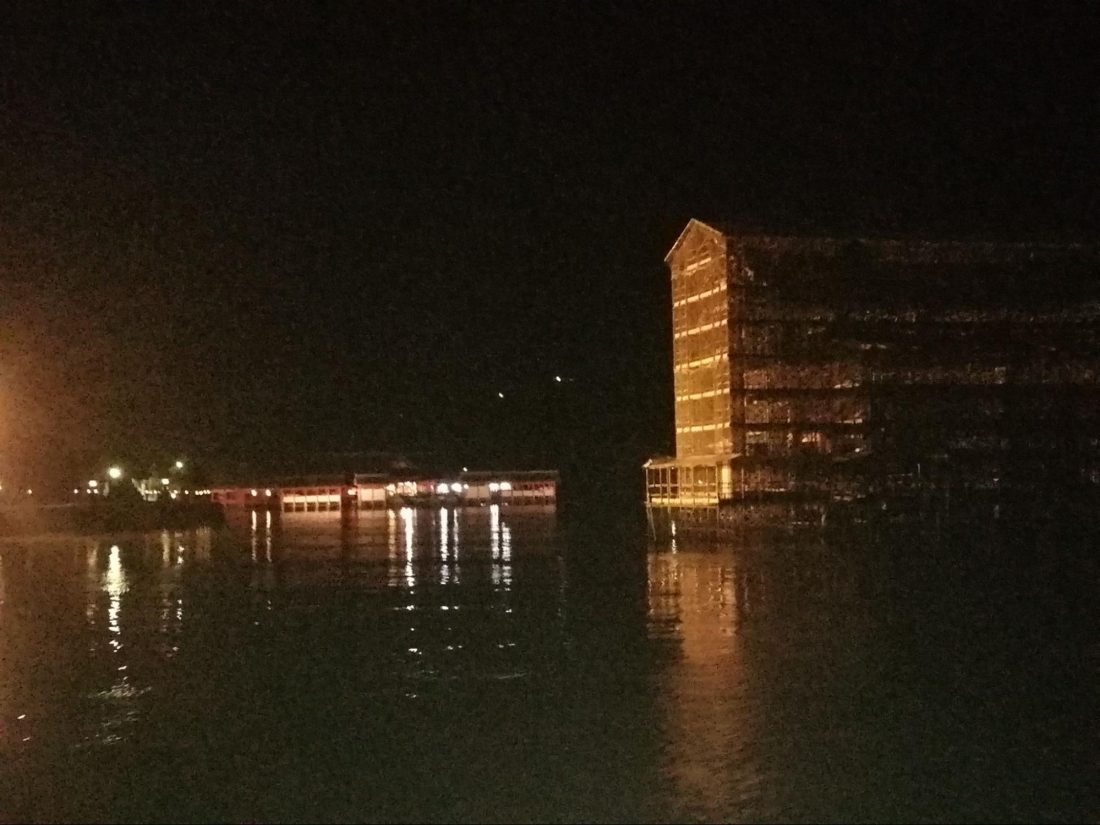
THE BOAT AND THE BACKGROUND
It’s mildly tricky to find the boat when it is time for your cruise. You are told that the boat will leave from Pier 3, but the majority of maps of Miyajima that I have seen make no reference to a Pier 3. Getting off the ferry from the mainland it is still very easy to miss the Pier 3 sign, because it is off to the left, and rather small. It’s a case of being obvious if you know where to look for it, and obscure if you don’t already know. So let’s bring you in the know. The JR ferry uses Pier One, while the rival Matsudai ferry uses Pier 2. As these both empty into the same building it’s easy to not be aware of the whole “1” and “2” part of it. Just as you exit this ferry terminal building, look immediately to your left and you’ll see a sign in green that makes reference to Pier 3.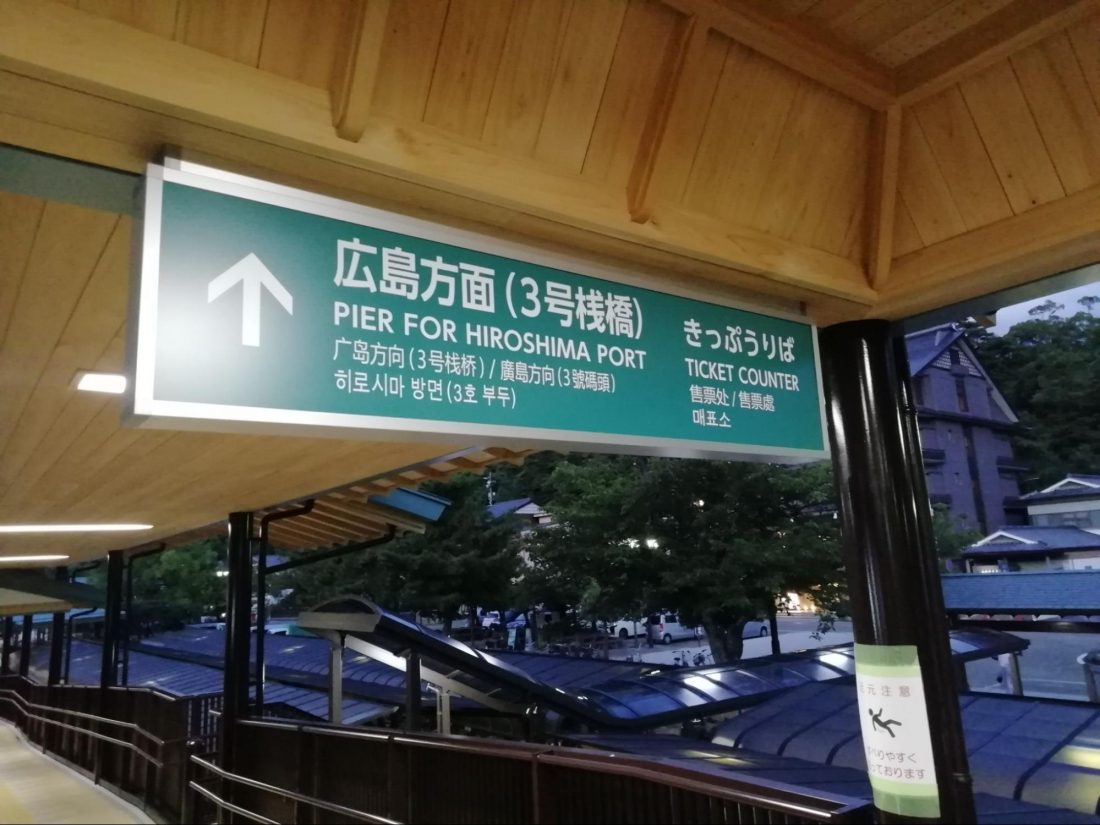
It turns out that Pier 3 is a separate dock here at the same port, but not sharing the same terminal building. Instead you make a short walk down a lovely wooden platform, walk past a parking lot full of cars, and then turn left toward the water to find a small wooden building that acts as a separate ticket office, another building that is a waiting room, and then Pier 3. This pier is used during the day for the ferry that runs to Ujina port, not Miyajiamaguchi. At night, a smaller boat uses it for these night cruises.
The waiting room is quite nice, carved with lush wood benches and seats. You are asked to be in the room 10 minutes prior to the scheduled departure time, and then are called about five minutes prior. You’ll be lead down the pier and then greeted at the boat. The Mikasamaru 3 is a long, low boat, with a cabin area that features comfortable padded seats around 10 tables, allowing groups to sit together and see faces. There is also a forward area outside the cabin, where I ended riding for the entirety of my trip. The wind in my face added to the enjoyment of the view.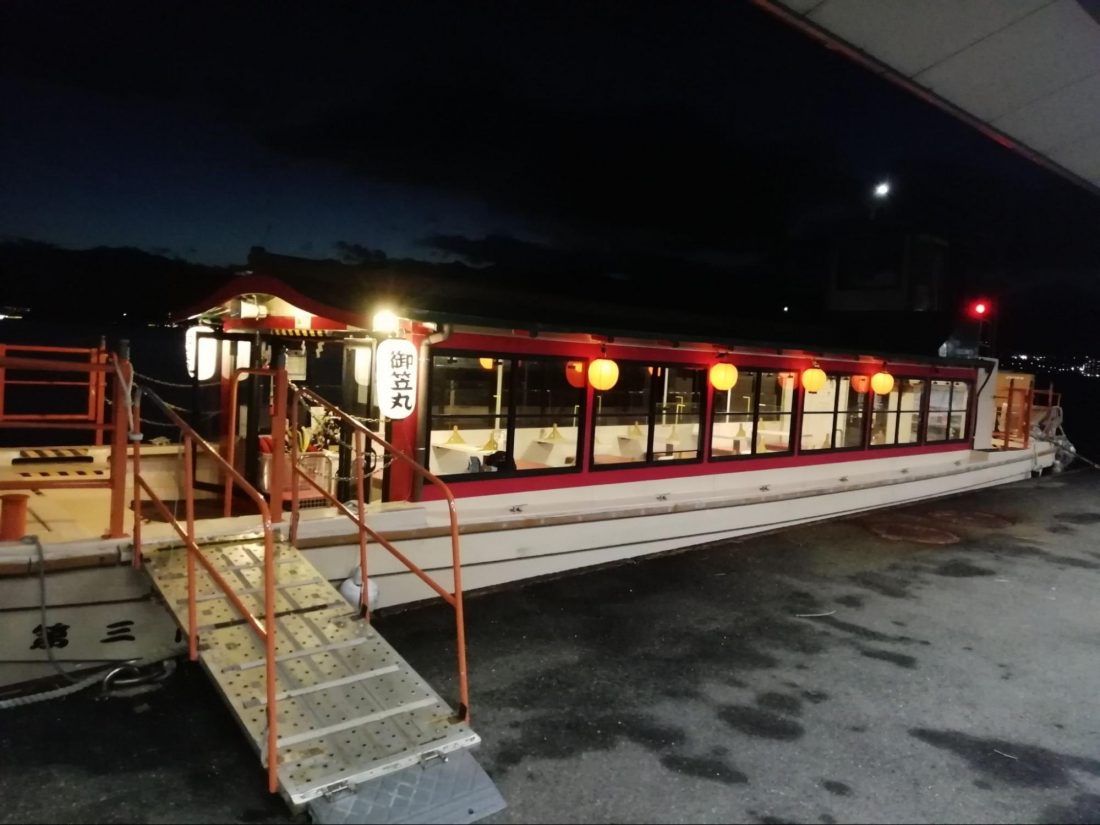
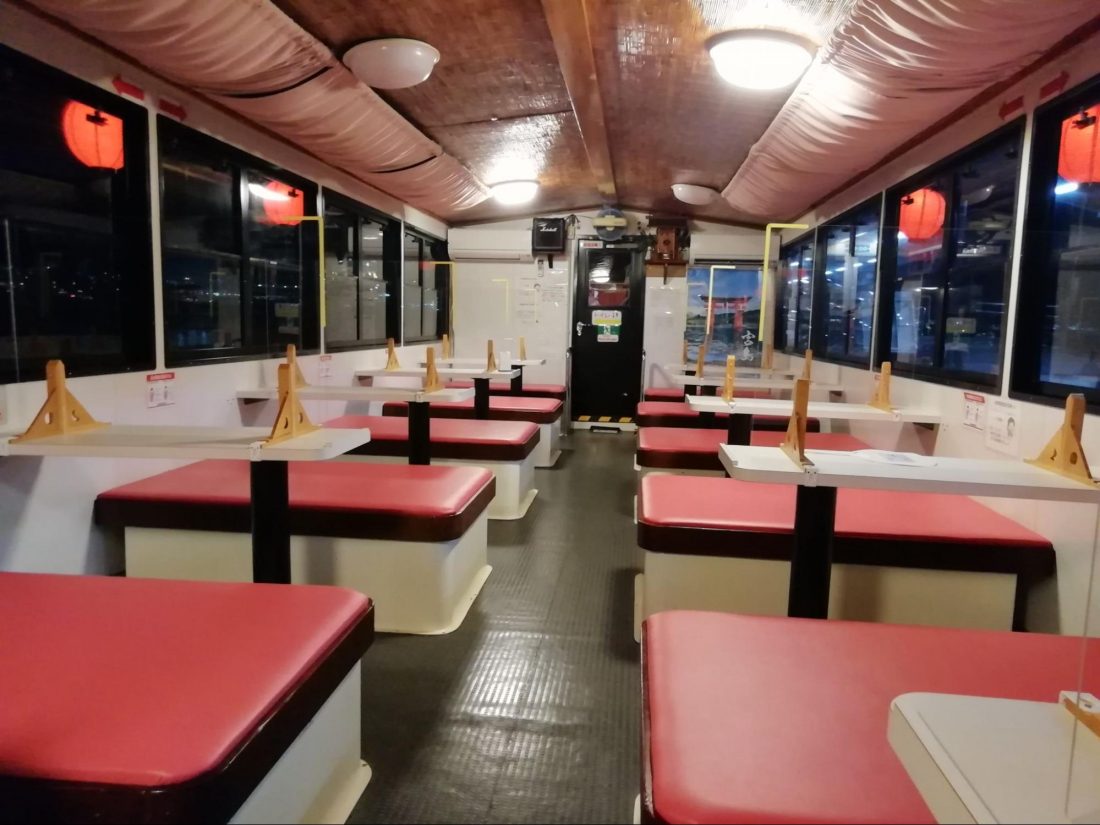
Before departure a guide will explain various facets of Miyajima and the tour to you. Of primary note was something I had never heard before. The various mountain tops of Miyajima resemble a sleeping woman. Mt. Misen, the point reached by cable car and famous for its scenic view and monkeys, is essentially the forehead of the woman. This image from long ago was what gave rise to the island’s iconic religious status. The woman is, in fact, the sleeping deity of the island. The realization of this makes some of Miyajima’s history a bit clearer. The guide explained (some I knew from years of living here, some was new even to me) that the entire island was considered a religious site because of the deity. Dating back to the year 600, even, the island took on its religious value. As such, for centuries it was forbidden for anyone to live on the island. Everyone returned to the mainland at night. Though time has progressed and Miyajima is now a tourist mecca with hotels and such, even in 2021 only about 1300 people actually live on the island.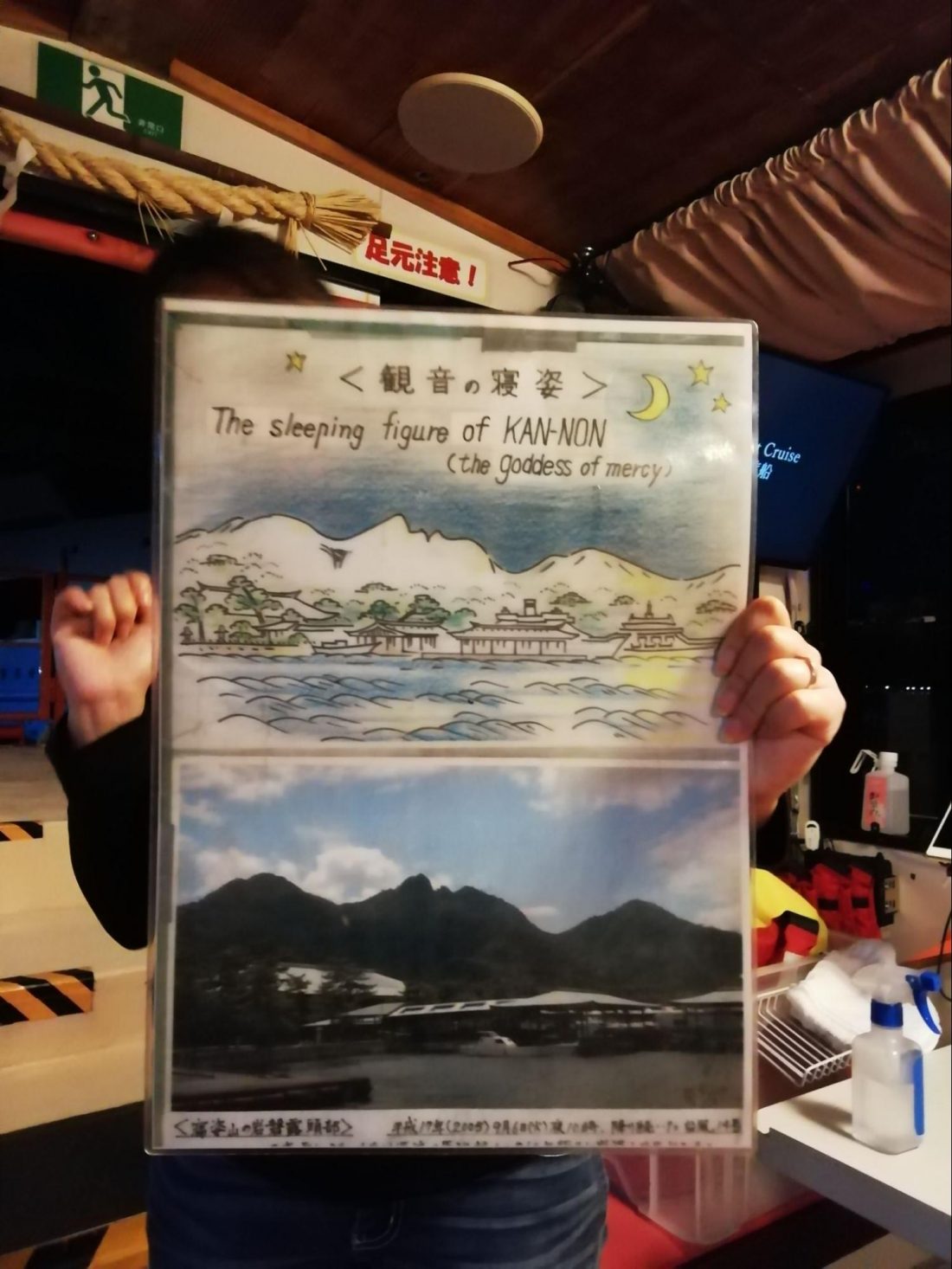
In the past there were no hospitals of any kind, either. Today, there is one. However, even that one closes at night, necessitating a trip to the mainland. And since the ferries stop around 10 p.m., that usually means an overnight on the mainland. Thus, my guide explained, many people on the island are said to just tough it out when they feel sick in the evening, rather than go to the mainland overnight. Also, leftover from the centuries of religious tradition, there is still to this date no convenience store on the island, and also no burials. Yes, even the residents here now will eventually be buried on the mainland out of respect to Miyajima.
Our guide also explained about the history of the name of the shrine on the island. Centuries ago it was ItsuKIshima, and now it is ItsuKUshima. While the change seems relatively minor, owing to kanji (Chinese characters), in fact it’s a large change. From three kanji down to one. The meaning, now, is literally “island of the gods”. The shrine was built on the coast, and the great gate is out in the water because the island itself was sacred, so approach should be by water only. This explains the iconic image of the great floating “torii.” The guide explained that our boat then would mimic the approach of a supplicant to the shrine.
Nearly all of this explanation came before we even departed, though disseminated rapidly. I filled in some of the gaps when talking to the guide throughout the trip. I checked, as well, about non-Japanese speaking tourists. The guide said that a video is played in the cabin with English subtitles, but with the sound turned off so that her own voice doesn’t have to compete with the video. Once underway, it’s mostly an issue of smiles and gestures, though some of the guides have learned a little English. I explained as much as I did above largely because it might not be clear when on board. But let’s set off.
THE SUPPLICANT’S JOURNEY
First, it was fascinating to see the sleeping “kannon” or deity soon after the ship pulled out. I had long known that the island itself was sacred. I had also known it was home to a female deity. I had never heard it said that the island itself LOOKED like a female before, until the guide’s speech in the cabin. But once she told me, and showed the sketch of what to look for, it was clear as a bell. My jaw dropped. It was so easy to spot it is really quite remarkable. Sadly, my phone’s night lens is weak. I don’t think you can see it well in the photos I was taking. Pro Tip: look for it in the daytime for the photos to impress your friends. If doing a night cruise like me, at least be sure your camera or smartphone has a really good night setting. My photos simply don’t live up to what I was seeing with my eyes. I tried enhancing my photos, but though it was clear to my eye even through my camera lens, I don’t have a good enough photo for here. It truly is easily spotted, however.
We moved out and slowed headed across the bay toward the shrine. It’s a short distance, but the boat moves slowly. In the meantime I enjoyed picking out the image of the deity in the hills the whole way, and also a wonderful starry sky that also did not show up in my camera. To my eyes though, there were constellations to be seen over the island even. Just this part of the cruise, even, was thoroughly enjoyable. As I mentioned above, once the explanation was finished, I was out on the forecastle of the ship right through till we were docking at the end of the journey.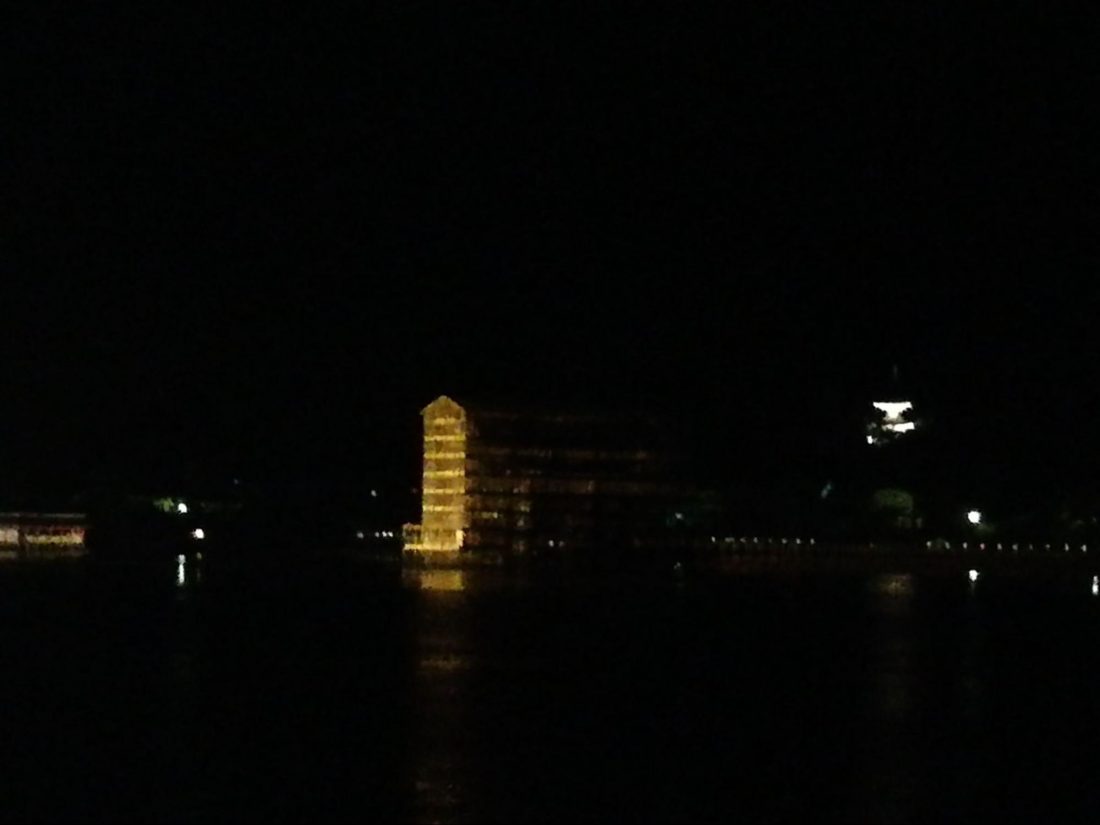
Once the gate was in sight the guide explained more details about the gate floating because approach to the shrine meant approach to the entire island, and thus from the sea. She explained more, too, that supplicants approaching, as with all mainland shrines, are truly meant to approach through the torii. Since in the past no one lived on the island, and there were no ferries, all boats approaching the shrine, though smaller and not engine-powered like ours, made a similar approach as ours.
First, it is important to get lined up squarely with the gate and the shrine. Then one is to turn around three times before proceeding forward. Our boat thus mimicked this. After heading across the bay from the pier, it turned to face the gate, and then proceeded to make a graceful, slow 360 degree turn. In deference to modern times, it only turns once, the guide laughingly explained. Turn complete and squared up again the boat pauses, and then slowly proceeds right up to the gate.
THE GATE
As frustrating as it is that the gate is fully scaffolded and has had its paint removed during the renovation process, there is still a massive spotlight shining on the gate, and honestly, with the shape of the gate thus penetrating the scaffolding as a kind of spooky shadow, it was still quite alluring and fascinating to see. Especially as the boat creeps more and more forward and the gate just grows and grows in front of you. When the scaffolding is gone, the new red paint shining in the spotlight, and the boat actually passing through torii it’s going to be mind-blowingly amazing. I can’t wait!
For now, the boat gets extremely close. So much so that it is nearly impossible to get all of the gate in the frame of my camera. It looms over you and simply demands for you to be impressed with its size. It’s awe-inspiring in this night time approach.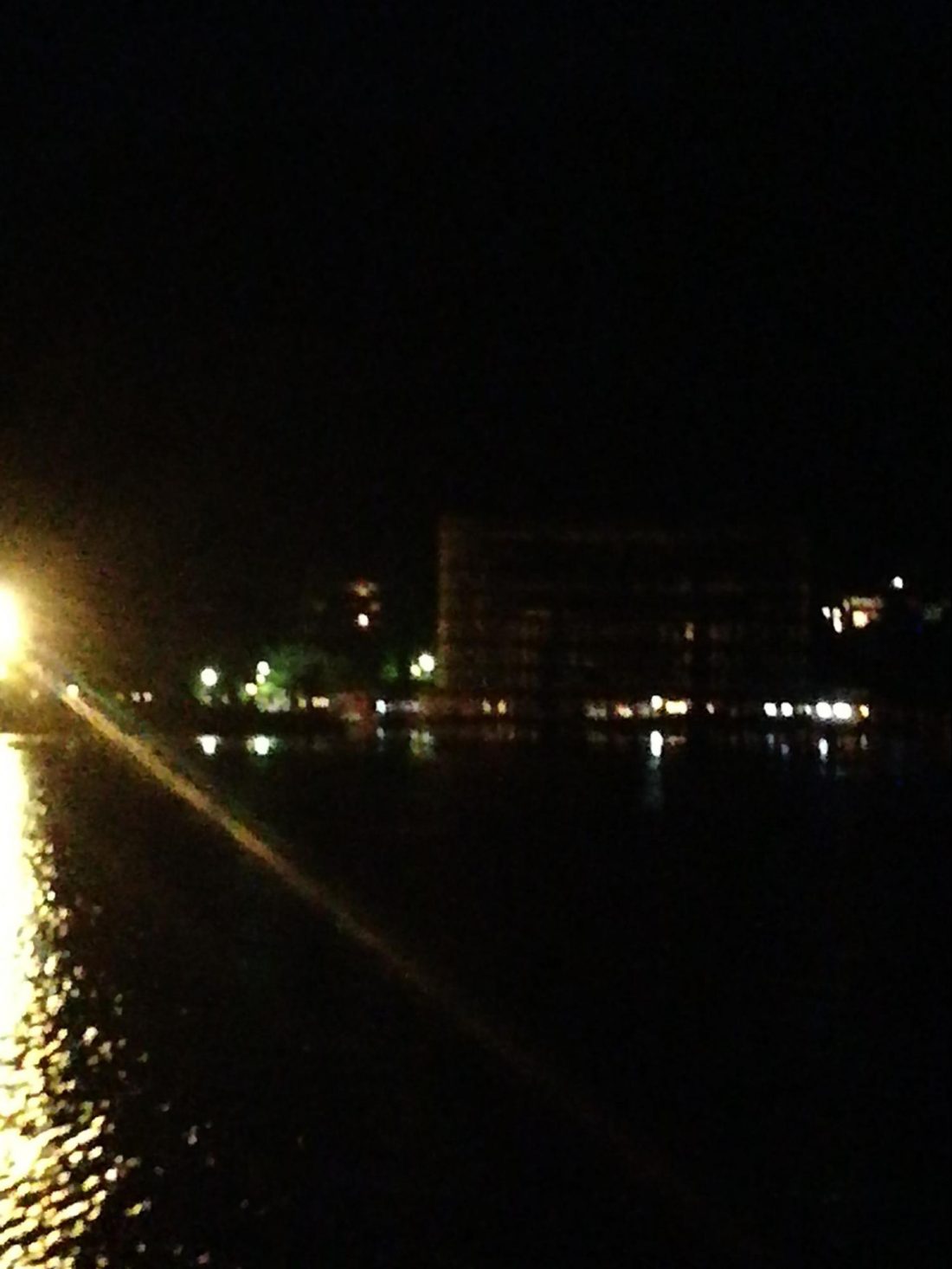
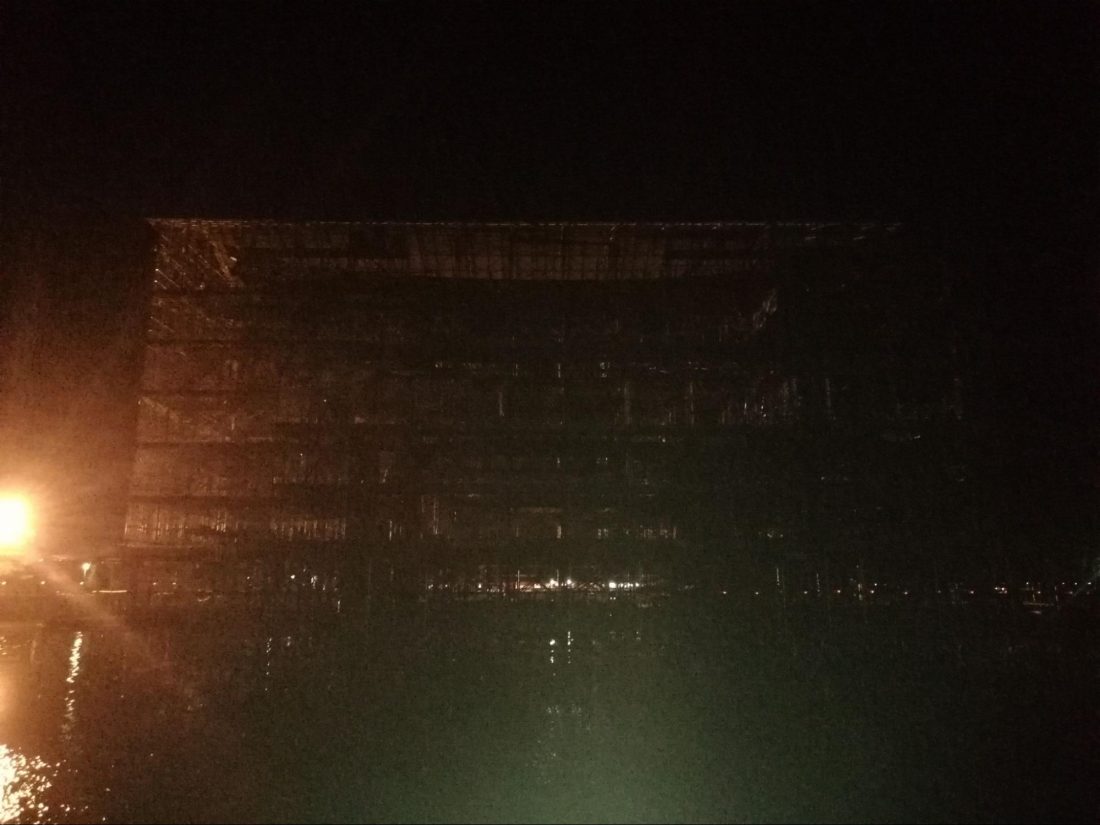
After getting close, the boat slips to the left, allowing a view of the shrine itself behind. The guide quickly warns that this is the only and only chance to get both gate and shrine in view at the same time. So be ready with your camera here. The boat then drifts further left, toward the spotlight, affording, when the renovation is complete, some of the most iconic photos of the gate possible, some of the very ones found on postcards to this day. The guide assures me that with the new coat of paint these photos will be amazing. For now, as the spotlight hits from this angle, the silhouette of the gate mostly disappears and the scaffolding takes on the look of a new home being built in the water. Though box-like in appearance it’s impressive in its own way. The boat then turns and heads back to the pier ending our journey.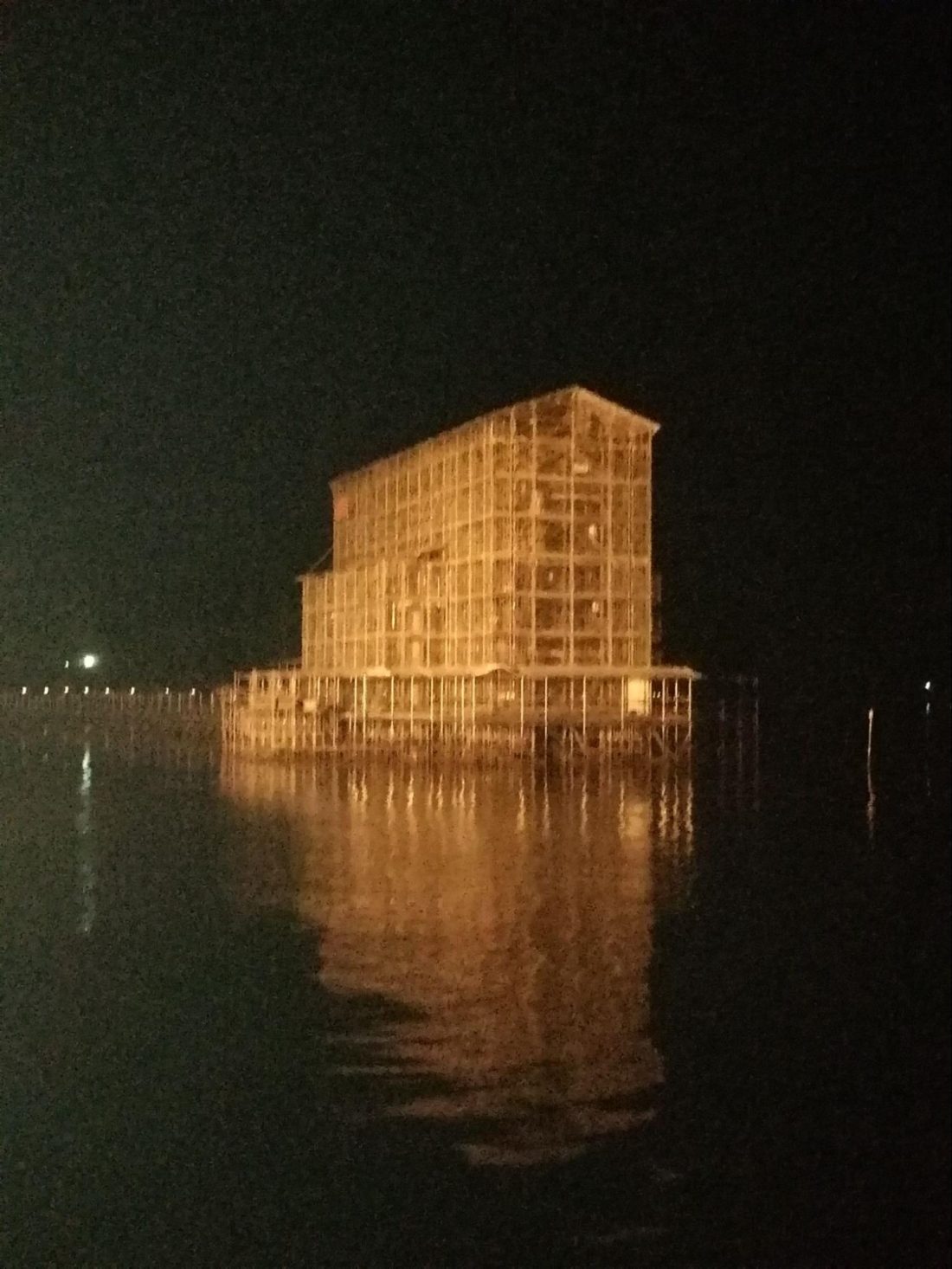
MOMENT OF JOY
Probably easy to guess from my gushings above, but when the boat came to a stop within meters of the gate, scaffolding or not, the site is just too impressive not to invoke joy. Utterly joyful, I was grinning like a child. Can’t wait to go back and do it again.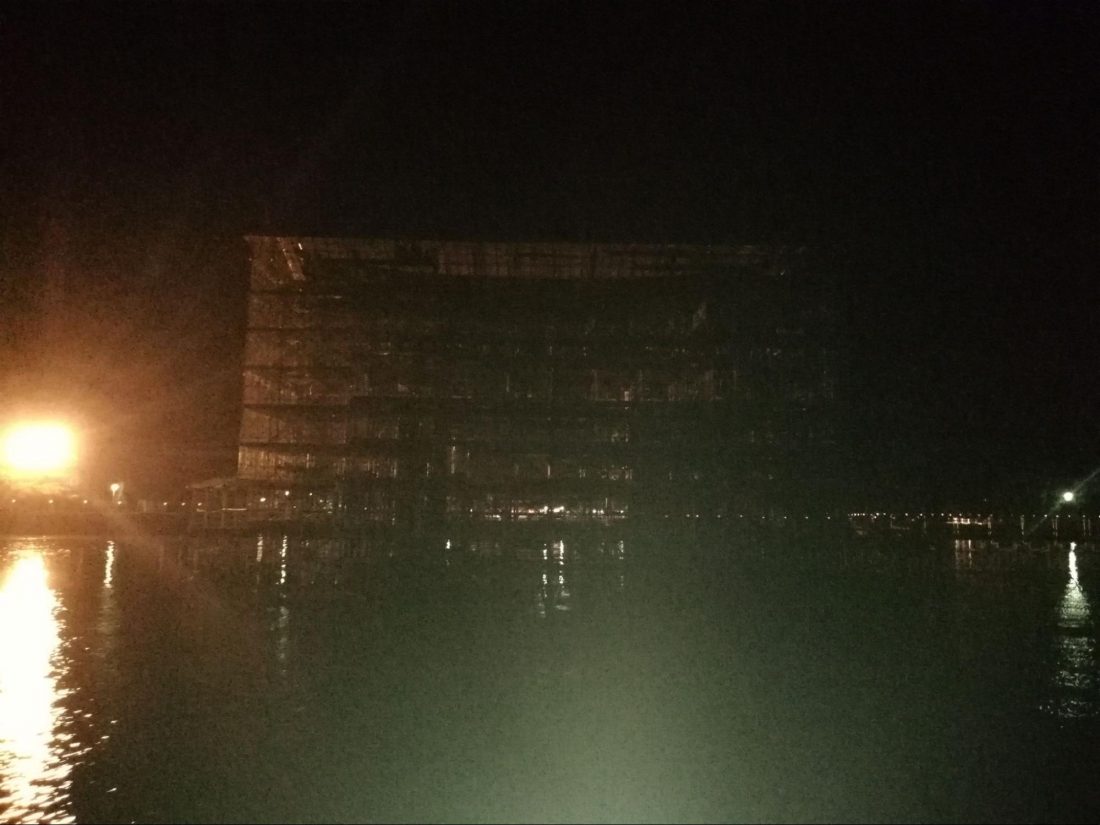
FINAL PRO TIPS
* It’s possible to phone in a reservation, but not really necessary. There is a little ticket office by Pier 3, and you can go directly there and make a reservation which saves any hassle of trying to deal with language over the phone. There are six different cruises every night. You pay in advance for the cruise that you want, write your name on a provided paper, and then go out and explore or eat or find some deer to photo, just being sure to be back 10 minutes before your departure.
* This is a night cruise. Go AFTER sunset. I went on the fourth cruise, the 7:55 p.m. departure. The cruise just before, at 7:15 had six passengers. My cruise was only me. (The cruise after had at least 10 that I saw when departing, including some wearing the complementary hotel yukatas). My guide and I commented on the shame of those six
passengers on the cruise before; the torii was not really visible through the scaffolding because it wasn’t dark enough for the spotlight to penetrate and illuminate. She wanted to tell those passengers to come back on a later cruise. So time it right. It’s worth it to wait. If you are not staying on the island, as I wasn’t, my cruise finished around 8:25, and there is an 8:40 ferry back to the mainland. The last ferry back is actually 10:14 if you want the blackest night possible, but really the fourth or fifth cruise times are your best options. Enjoy!




